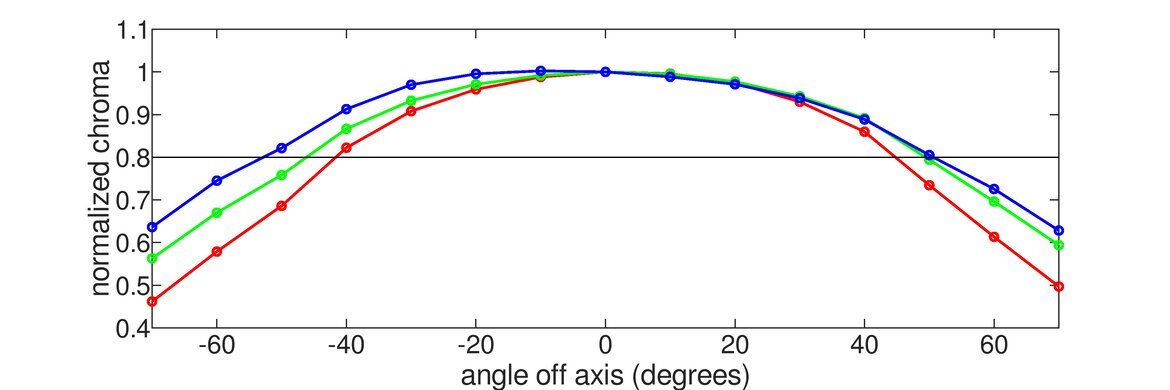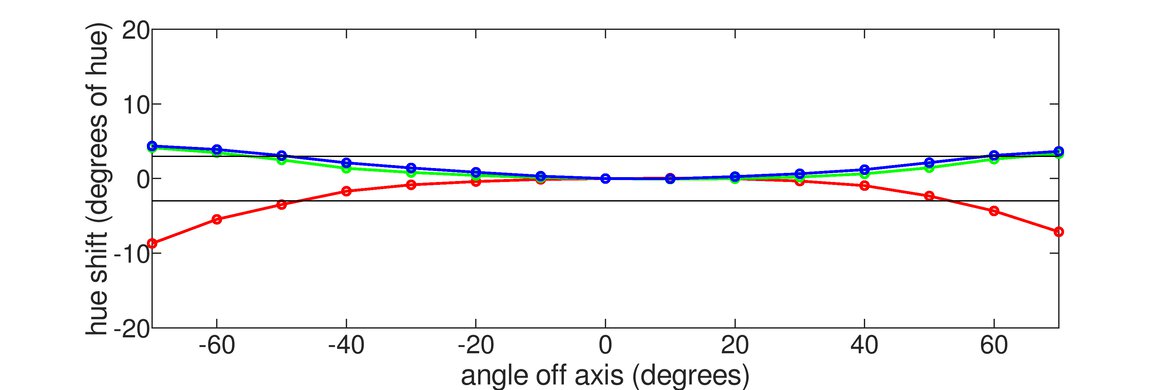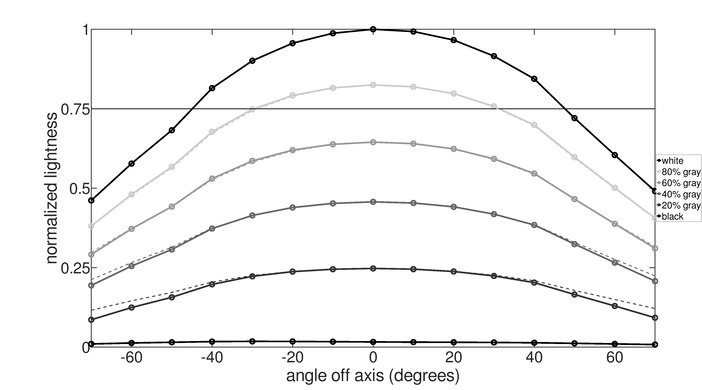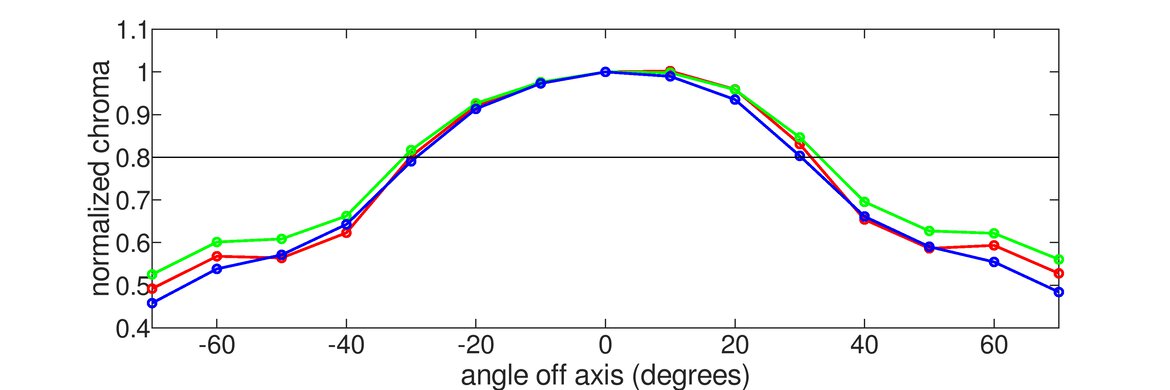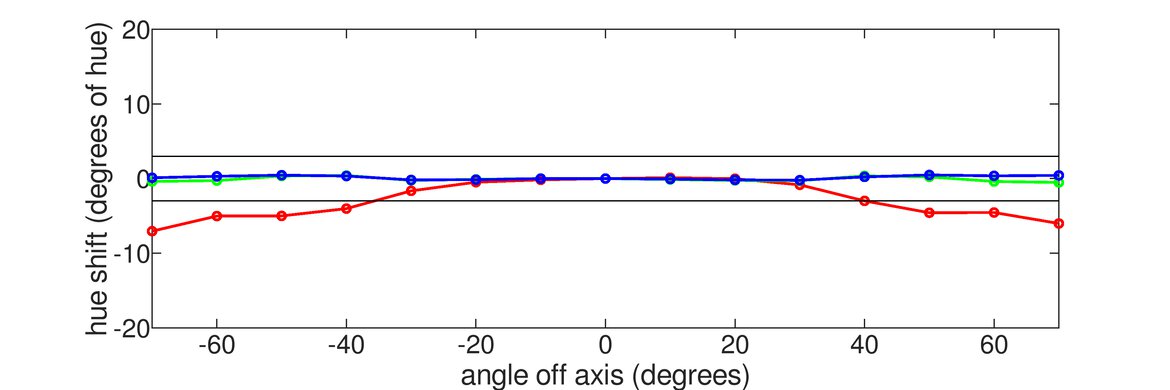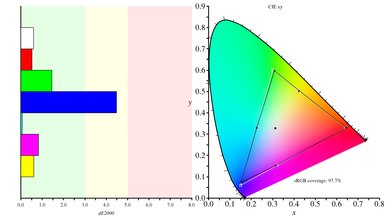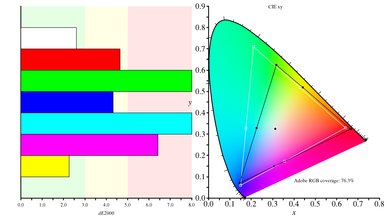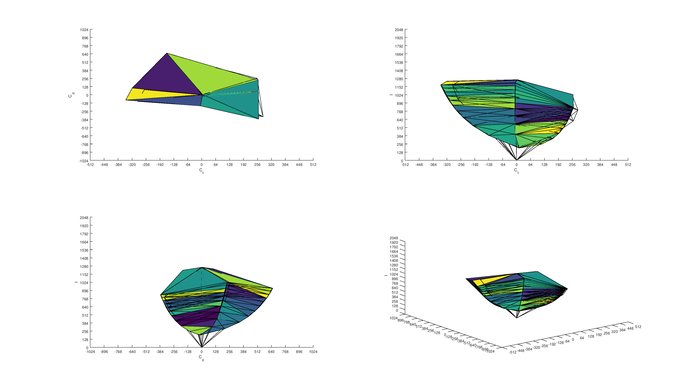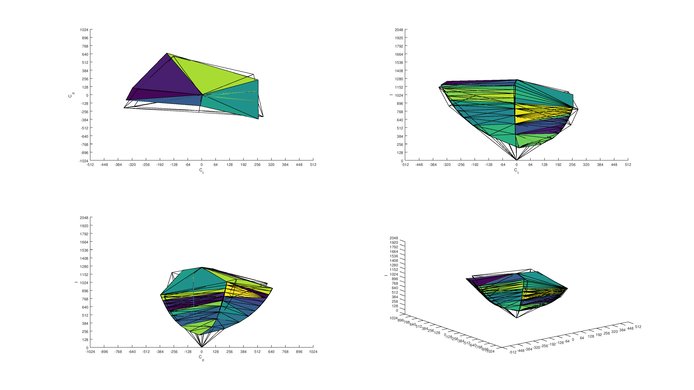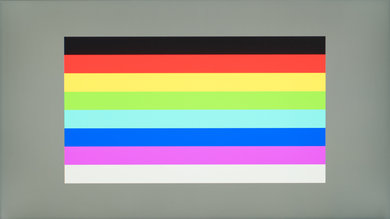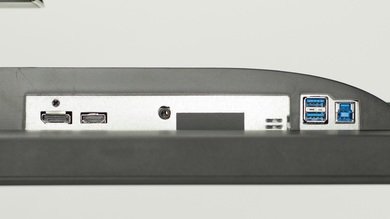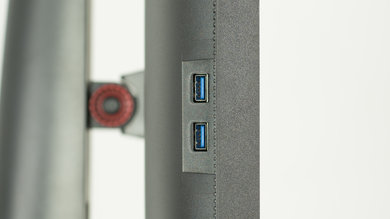The Acer Predator XB271HU Bmiprz is a good 1440p monitor with a fast refresh rate, wide viewing angles, and outstanding low input lag. The stand has impressive ergonomics, so it's easy to place it in an ideal viewing position or turn the screen to share it with someone else. Although it's a great gaming monitor overall, the response time is a bit slower than most similar monitors. Unfortunately, it has a low contrast ratio, so blacks appear gray in a dark room, but this is typical for IPS monitors.
Our Verdict
The Acer Predator XB271HU is a good monitor for most uses. It's a very good office monitor thanks to the exceptional ergonomics and good peak brightness, and it has excellent low input lag, making it a great gaming monitor as well. It's a decent monitor for multimedia and media creation, but it has a low native contrast ratio, so it's not a great choice for a dark room.
- Image remains accurate at an angle.
- Outstanding ergonomics.
- Outstanding low input lag.
- Low contrast ratio.
- Slower response time than similar models.
Very good monitor for office use. The Acer Predator XB271HU features an excellent stand with complete articulation making it easy to find a comfortable position. It offers a good amount of screen real-estate for productivity, and its wide viewing angle and rotating feature makes it powerful in a more communal working environment.
This is a great gaming monitor. The Acer Predator XB271HU's 144Hz refresh rate, G-SYNC support, and excellent low input lag provide a great gaming experience. Unfortunately, it delivers only average picture quality, which is mostly an issue for darker viewing environments due to the low contrast ratio and poor black uniformity.
The Acer Predator XB271HU is a decent monitor for consuming media. It has a great horizontal viewing angle, so multiple people can share the screen without sacrificing picture quality. It has excellent uniformity, but its low contrast and lack of HDR-related features mean its picture quality is only about average in a dark room.
The Acer Predator XB271HU is a decent monitor for creating media. It has excellent gray uniformity, and when calibrated, it tracks the sRGB target almost perfectly. Unfortunately, though, it does not cover wide gamuts like Adobe RGB and DCI-P3, making it a bit limited for producing print and HDR content.
HDR isn't supported.
Changelog
- Updated Feb 21, 2020: Converted to Test Bench 1.1.
- Updated Oct 12, 2017: Review published.
Check Price
Differences Between Sizes And Variants
We tested the Acer Predator XB271HU Bmiprz, which is a 1440p IPS gaming monitor. There are many other variants of the Predator lineup which all support G-SYNC but with different sizes, panel types, resolutions, and refresh rates - a selection of which are listed in the table below.
If someone comes across a different type of panel or if their monitor doesn't correspond to our review, let us know and we will update the review. Note that some tests such as the gray uniformity may vary between individual units.
| Model | Size | Panel Type | Resolution | Native Refresh |
| XB271HU bmiprz | 27" | IPS | 1440p | 144Hz |
| XB271HU Abmiprz | 27" | TN | 1440p | 144Hz |
| XB272 bmiprz | 27" | TN | 1080p | 240Hz |
| XB281HK bmiprz | 28" | TN | 4k | 60Hz |
| XB321HK bmiphz | 32" | IPS | 4k | 60Hz |
| XB273K Pbmiphzx | 27" | IPS | 4k | 120Hz |
Our Acer Predator XB271HU was manufactured in July 2016.
Popular Monitor Comparisons

The Acer Predator XB271HU is a high-end monitor with very good overall performance, especially for gaming (see our recommendations for the best gaming monitors). However, it's far from perfect, especially when viewed in a dark room. While it's a good jack-of-all-trades, for specific uses there may be other monitors to consider. See our recommendations for the best monitors.
The Acer Predator XB273K Pbmiphzx is slightly better than the Acer Predator XB271HU Bmiprz. The XB273K has a higher resolution to display more details on your screen and supports HDR, great for HDR gaming. The XB271HU has a higher refresh rate, a BFI feature that helps improve the appearance of motion, and better ergonomics to help position it comfortably.
The ASUS ROG PG279Q is better than the Acer Predator XB271HU Bmiprz. The ASUS has slightly better motion blur, which is great for gaming, and comes with marginally better out-of-the-box color accuracy that is great for office use. Also, if you plan to use it for media creation, the better black uniformity of the ASUS makes it a better choice.
The Acer Predator X27 bmiphzx is better than the Acer Predator XB271HU Bmiprz. The X27 has a higher native resolution, so you can see more details, and it supports HDR. It displays a wider color gamut, which is great for professional users in print and marketing. The XB271HU has lower native input lag, which is great for gamers, and has an optional black frame insertion feature that can clear up motion.
The LG 27UK650-W is a bit better than the Acer Predator XB271HU Bmiprz. The LG 27UK650-W is a 4k monitor that supports HDR. It supports FreeSync VRR, can get brighter than the Acer, and has better reflection handling. The Acer Predator, on the other hand, has better ergonomics and is easier to place comfortably. It has a lower input lag, supports G-SYNC VRR over a wider range of frequencies, and can offer you a tear-free gaming experience.

We buy and test more than 30 monitors each year, with units that we buy completely on our own, without any cherry-picked units or samples. We put a lot into each unbiased, straight-to-the-point review, and there's a whole process from purchasing to publishing, involving multiple teams and people. We do more than just use the monitor for a week; we use specialized and custom tools to measure various aspects with objective data-based results. We also consider multiple factors before making any recommendations, including the monitor's cost, its performance against the competition, and whether or not it's easy to find.
Test Results

There's quite a good range of ergonomic adjustment options available, which makes it easy to find a comfortable setup. The screen also rotates to portrait orientation on either side, so you can choose which direction you want the inputs to face.
The rear of the monitor is quite basic but looks good. There's a hole in the back of the stand for cable management, and a quick-release button to remove the stand for easy transport.
The monitor appears a bit thick when viewed from the side, as the area where the components and inputs are located is quite bulky. It can still sit quite close to a wall but does end up taking more desk space than some other designs such as the Dell S2716DG.
The Acer Predator XB271HU doesn't have a local dimming feature. The video is for reference only.
The Acer Predator XB271HU has good peak brightness, with no fluctuation in brightness with different content. It's bright enough that glare shouldn't be an issue in most rooms.
HDR isn't supported.
Great horizontal viewing angle. This results in no visible deterioration when directly in front, and the screen remains usable to users sharing the screen on either side.
Decent vertical viewing angle. Moving your head up and down causes no visible shift in the image, and the Acer Predator XB271 remains usable when standing above it or while sitting below the screen.
Out of the box and when set on the most accurate picture mode, the monitor still has poor accuracy. Even non-enthusiasts are likely to notice inaccuracies in shades of gray.
After calibration, the Acer Predator XB271HU is much more precise. The white balance and color accuracy are spot on and most of the issues are corrected, especially the white point, which now is right on target.
You can download our ICC profile calibration here. This is provided for reference only and shouldn't be used, as the calibration values vary per individual unit even for the same model due to manufacturing tolerances.
The Acer XB271HU has no issue covering the standard sRGB colorspace, which is great for most uses. Its coverage of the Adobe RGB colorspace, however, is quite limited, making this monitor less useful for professional use.
Good native color volume. The monitor has no issue filling up most of its native sRGB colorspace. It does, however, have some difficulty reproducing very dark tones, mostly due to its limited contrast ratio.
HDR gamuts aren't supported.
HDR color volumes aren't supported.
| Overdrive Setting | Response Time Chart | Response Time Tables | Motion Blur Photo |
| Off | Chart | Table | Photo |
| Normal | Chart | Table | Photo |
| Extreme | Chart | Table | Photo |
The Acer Predator XB271HU has a decent response time when using the 'Off' overdrive setting. The 'Normal' setting has a much faster response time, but there's more noticeable overshoot. We don't recommend using 'OD Extreme', as it introduces significant and easily visible overshoot artifacts behind moving objects.
| Overdrive Setting | Response Time Chart | Response Time Tables | Motion Blur Photo |
| Off | Chart | Table | Photo |
| Normal | Chart | Table | Photo |
| Extreme | Chart | Table | Photo |
The 60Hz response time is very similar to the max refresh rate response time. The 'Off' overdrive setting has a decent response time, with no overshoot. Like at the max refresh rate, the 'Normal' response time results in much less blur, but there's noticeable overshoot in many scenes.
The Acer Predator XB271HU has an optional Black Frame Insertion (BFI) feature, which can be used to add flicker and help reduce persistence blur. This feature is only available with 120Hz, 100Hz, and 85Hz inputs. This is useful for first-person shooters or other fast-paced games.
The monitor has a high native refresh rate of 144Hz, which can be overclocked up to 165Hz. This results in very smooth motion and a responsive feel. NVIDIA's G-SYNC on this monitor can adjust the screen's refresh rate to match the frame rate of a compatible graphics card, which allows playing graphically-intensive games with significant framerate drops without tearing or stuttering.
Excellent low input lag, mostly due to the fast scan time of 144Hz. The 60Hz input lag is much higher, as is the input lag with ULMB (BFI) enabled at 120Hz, but both are still fairly low. The G-SYNC input lag is only slightly higher than the native input lag, which is great.
The Acer XB271HU has a great 1440p resolution and a large 27" diagonal, giving it lots of screen space while still having good pixel density and detail.
It is possible to add a central crosshair to the Predator through the on-screen menu, with the 'Aim Point' option.









